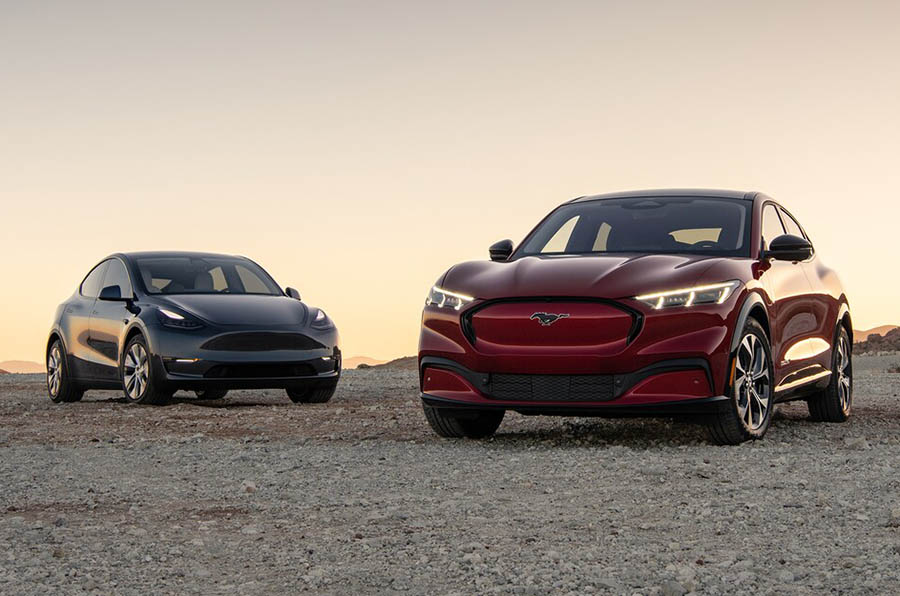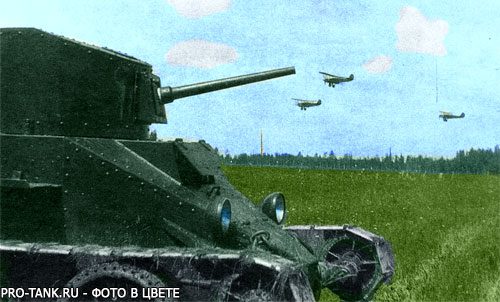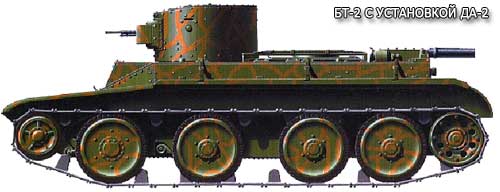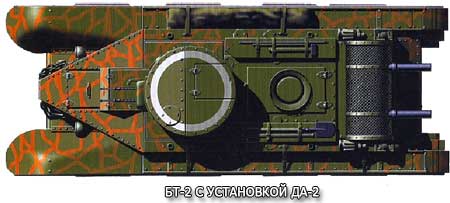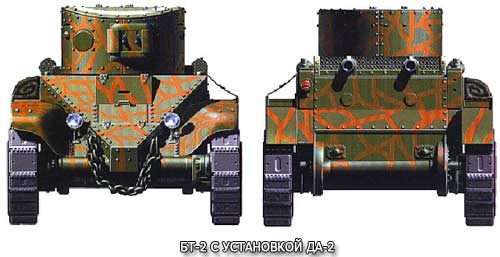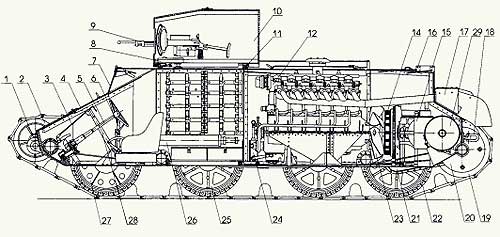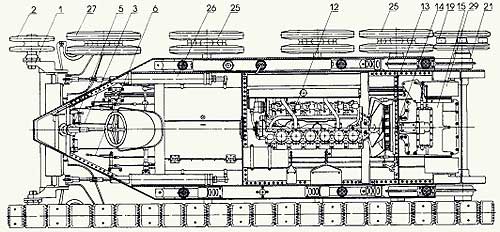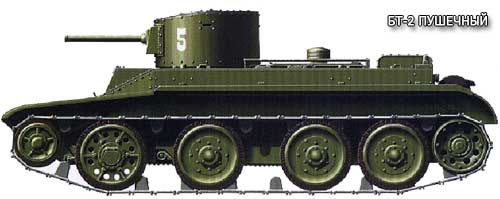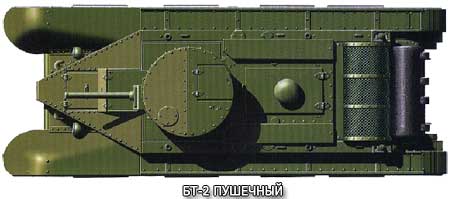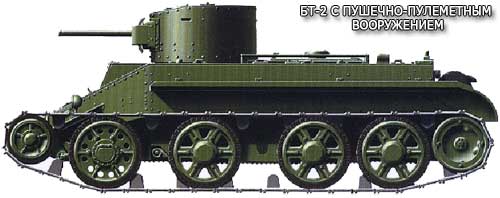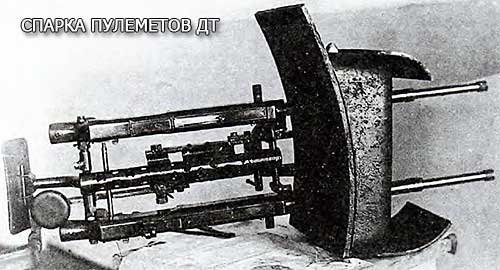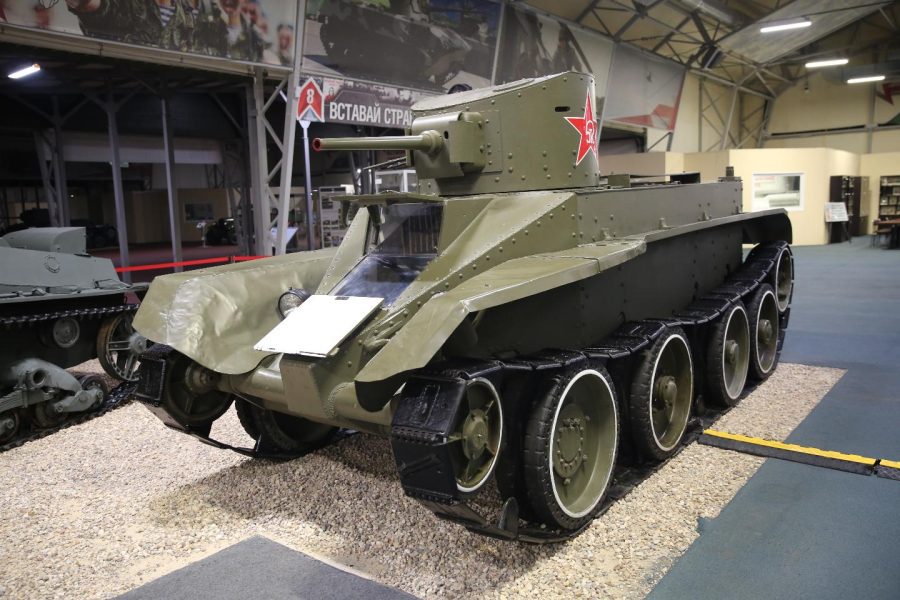
Light wheeled-tracked tank BT-2
Light wheeled-tracked tank BT-2
Several years from the late 20s and early 30s of the 20th century Christie's tank was used as a basis, in the creation of the first Soviet military vehicles, of course, with a number of upgrades and additions related to weapons, transmissions, engines and a number of other parameters. After installing a specially designed turret with weapons on the chassis of the Christie tank, the new tank was adopted by the Red Army in 1931 and put into production under the designation BT-2.
On November 7, 1931, the first three cars were shown at the parade. Until 1933, 623 BT-2s were built. The first production wheeled-tracked tank was designated BT-2 and differed from the American prototype in numerous design features. First of all, the tank had a rotating turret (designed by engineer A.A. Maloshtanov), equipped with lighter (with numerous lightening holes) road wheels. The fighting compartment was reconfigured - the ammunition racks were moved, new devices were installed, etc. Its body was a box assembled from armor plates interconnected by riveting. The front part of the body had the shape of a truncated pyramid. For landing in the tank, the front door was used, which opened towards itself. Above it, in the front wall of the driver's booth, there was a shield with a viewing slot, which leaned upwards. The nose part consisted of a steel casting, to which the front armor plates and the bottom were riveted and welded. In addition, it served as a crankcase for mounting the rack and steering levers. A steel pipe was threaded through the casting, welded on the outside to the armor limits and intended for fastening the sloth cranks.
Consoles in the form of triangular sheets of armor were welded (or riveted) to the nose of the hull on both sides, which served as a fastening part of the pipe with the nose of the hull. The consoles had platforms for attaching rubber buffers that limited the travel of the shock absorbers of the front steered wheels.
The side walls of the tank hull are double. The inner wall sheets were made of simple non-armored steel and had three holes for the passage of seamless steel pipes for mounting the axle shafts of the road wheels. From the outside, 5 struts are riveted to the sheets for fastening cylindrical spiral springs of the suspension. Between the 3rd and 4th struts, a gas tank was located on wooden linings. Final drive housings were riveted to the rear lower part of the inner sheets of the hull, and struts for attaching the rear spring were riveted to the upper part. The outer sheets of the walls are armored. They were bolted to the spring brackets. Outside, on both sides, wings were mounted on four brackets.
1. Guide wheel bracket. 2. Guide wheel. 3. Mountain brake lever. 4.Hatch for embarkation and disembarkation of the crew. 5. Steering column. 6. Gearshift lever. 7. Front shield of the driver. 8.Manual mechanism for turning the tower. 9. Front steering wheel. 10. Tower. 11. Shoulder strap. 12. Liberty engine. 13. Partition of the engine compartment. 14.Main clutch. 15. Gearbox. 16. Blinds. 17. Silencer. 18. Earring. 19.Crawler drive wheel. 20. Final drive housing. 21. Guitar. 22. Driving wheel wheel travel. 23. Fan. 24. Oil tank. 25. Support roller. 26. Horizontal spring of the front track roller. 27. Front steering wheel. 28. Track control lever. 29.Onboard clutch
The stern of the tank hull consisted of two final drive housings, put on and welded onto a steel pipe, riveted to the inner side sheets; two sheets - vertical and inclined, welded to the pipe and crankcases (two towing brackets are riveted to the vertical sheet), and a removable rear shield that covered the transmission compartment from behind. In the vertical wall of the shield there were holes for the passage of exhaust pipes. From the outside, a silencer was attached to the shield. The bottom of the body is solid, from one sheet. In it, under the oil pump, there was a hatch for dismantling the engine and two plugs for draining water and oil. The roof at the front had a large round hole for the turret with a riveted bottom shoulder strap of the ball bearing. Above the engine compartment in the middle, the roof was removable, with a sheet that was folded up and locked with a latch from the inside; From the outside, the valve was opened with a key. In the middle of the sheet there was a hole for the outlet of the air supply pipe to the carburetors.
On the sides of the removable sheet on the racks, radiator shields were attached, under which air was sucked in to cool the radiators. Above the transmission compartment there was a square hatch for the outlet of hot air, closed with blinds. Longitudinal armor plates above the space between the side walls were attached to the spring brackets with studs. Each sheet had three round holes (extreme for the passage of the spring adjusting glasses, and the middle one above the filler neck of the gas tank); one more hole with a through slot was located above the gas pipe plug, and three brackets for the track belt fastening belts on the folded wing were also installed here.
The inner part of the tank hull was divided by partitions into 4 compartments: control, combat, engine and transmission. In the first, near the driver's seat, there were levers and control pedals and a dashboard with instruments. In the second, ammunition, a tool were packed and there was a place for the tank commander (he is also a gunner and loader). The fighting compartment was separated from the engine compartment by a collapsible partition with doors. The engine room contained the engine, radiators, oil tank and battery; it was separated from the transmission compartment by a collapsible partition, which had a cutout for the fan.
The turret of the BT-2 tank is armored (booking thickness is 13 mm), round, riveted, shifted back by 50 mm. In the stern there was a device for laying shells. From above, the tower had a hatch with a lid that leaned forward on two hinges and was locked in the closed position with a lock. To the left of it is a round hatch for flag signaling. The top of the tower was beveled in front. The side wall was assembled from two riveted halves. From below, the upper shoulder strap of the ball bearing was attached to the tower. The rotation and braking of the tower was carried out using a rotary mechanism, the basis of which was a planetary gearbox. To turn the turret, the tank commander turned the steering wheel by the handle.
The first 60 tanks did not have a ball-type machine-gun mount, but the armament of the tank presented a problem. It was supposed to equip the tank with a 37-mm cannon and a machine gun, but due to the lack of cannons, tanks of the first series were armed with two machine guns (located in the same installation) or were not armed at all.
350 tanks were armed with twin DA-2 machine guns of 7,62-mm caliber, which were mounted in the cannon embrasure of the turret in a specially designed mask. The mask on its trunnions rotated around a horizontal axis, which made it possible to give the machine guns an elevation angle of +22 ° and a declination of -25 °. Horizontal pointing angles (without turning the turret) were given to the machine guns by turning a specially designed swivel inserted into the mask with the help of vertical pins, while turning angles were achieved: 6 ° to the right, 8 ° to the left. To the right of the paired ones there was a single DT machine gun. Shooting from a twin installation was carried out by one shooter, standing, leaning his chest on the bib, chin on the chinrest. In addition, the entire installation lay with a shoulder pad on the right shoulder of the shooter. Ammunition consisted of 43 discs - 2709 rounds. The mechanical power transmission consisted of a multi-disk main clutch of dry friction (steel on steel), which was mounted on the toe of the crankshaft, a four-speed gearbox, two multi-disk onboard clutches with band brakes, two single-stage final drives and two gearboxes (guitars) of the drive to the rear road wheels - leading when wheeled. Each guitar has a set of five gears placed in the crankcase, which simultaneously acted as a balancer for the last road wheel. Tank control drives are mechanical. Two levers are used to turn on caterpillar tracks, and a steering wheel is used to turn on wheels. The tank had two types of propulsion: tracked and wheeled. The first consisted of two caterpillar chains, each with 46 tracks (23 flat and 23 ridge) with a width of 260 mm; two rear drive wheels with a diameter of 640 mm; eight road wheels with a diameter of 815 mm and two idler guide rollers with tensioners. The track rollers were suspended individually on cylindrical coil springs located for. six rollers vertically, between the inner and outer walls of the hull, and for the two front ones - horizontally, inside the fighting compartment. The drive wheels and track rollers are rubber-coated. The BT-2 was the first tank to be put into service with such a suspension. Along with a large value of specific power, this was one of the most important conditions for creating a high-speed combat vehicle. The first serial Tanks BT-2s began to enter the troops in 1932. These combat vehicles were intended to arm independent mechanized formations, the only representative of which at that time in the Red Army was the 1st mechanized brigade named after K. B. Kalinovsky, stationed in the Moscow military district. The composition of the combat support of the brigade included a “battalion of destroyer tanks”, armed with BT-2 vehicles. Operation in the army revealed many shortcomings of the BT-2 tanks. Unreliable engines often failed, caterpillar tracks made of low-quality steel were destroyed. No less acute was the problem of spare parts. So, in the first half of 1933, the industry produced only 80 spare tracks. BT tanks. Tactical and technical characteristics
See also: “Light tank T-26 (single turret variant)” The habitability of combat vehicles left much to be desired, in which it was hot in summer and very cold in winter. Many breakdowns were associated with an extremely low level of technical training of personnel. Despite all the shortcomings and complexity of operation, tankers fell in love with BT tanks for their excellent dynamic qualities, which they used to the fullest. So, by 1935, during the exercises, BT crews were already making massive jumps in their cars over various obstacles by 15-20 meters, and individual cars “managed” to jump as much as 40 meters.
Tanks BT-2s were quite actively used in armed conflicts in which the USSR took part. For example, there is such a mention of the hostilities on the Khalkhin-Gol River: Sources:
| |||||||||||||||||||||||||||||||||||||||||||||||||||||||||||||||||||||||||||||||||||||||||||||||||||||||||||||||||||||||||||||

